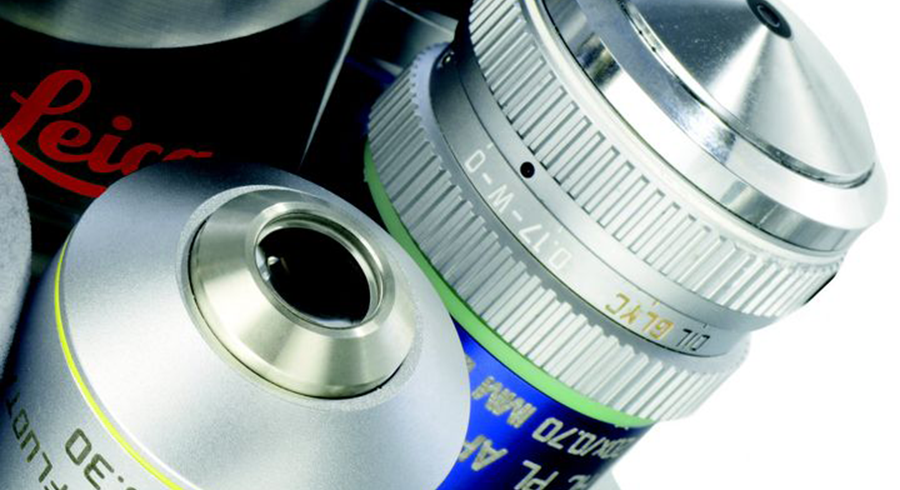For Normal Light Microscopy: Types A and B are virtually interchangeable and are miscible with each other for intermediate viscosities. Produced in larger quantities than other types, Types A and B are the most economical. The deciding factor in choosing between them is the optimum viscosity for your particular application.
Type A, at 150 centistokes, reduces any tendancy to trap air, especially helpful to beginning students. Air bubbles cause image degradation.
Type B, at 1250 cSt, is thick enough for viewing multiple slides with one application. This saves time during batch processing.
Automated Hematology Systems: Use Type 300; Automated Hematology Systems depend on accurate, precisely controlled physical and optical properties of immersion oil for successful imaging and mechanical processing. Type 300 is designed and manufactured to meet the stringent requirements of this equipment, which include specialized viscosity and exacting controls for its consistency.
Inverted, Inclined, Projection, and Long Focus Intruments: Use type NVH or OVH; The greater the gap between the cover glass and objective, or between the slide and condenser, the more desirable high viscosity becomes. The very high viscosities of Type NVH at 21,000 cSt and Type OVH at 46,000 cSt give excellent results for these applications.
Blending Oils from the Miscible Group: The Miscible Group of immersion oils is A, B, 300, NVH and OVH. Users can easily blend any two immersion oils from the Miscible Group to obtain an immersion oil with an intermediate viscosity while maintaining the optical properties common to both.
Fluorescence Microscopy: Extremely low fluorescence is achieved by Type LDF and Type HF. Type FF is virtually fluorescence-free, though not ISO compliant. Type HF is slightly more fluorescent than Type LDF, but is halogen-free. For most non-critical fluorescence microscopy applications, Types A and B are sufficiently low fluorescing. Viscosities for Type LDF, HF, and FF are 500 cSt, 700 cSt and 170 cSt, respectively. Types A and B are 150 cSt and 1250 cSt.
Elevated Temperatures (>23°C to 37°C): Use Type 37. Elevated temperatures can be due to substage illuminators, “hot stage”, or other causes – ideal situations for Cargille Immersion Oil Type 37. Developed specifically for working at human body temperatures, Type 37 has a refractive index of 1.515 and a viscosity of 1250 cSt at 37°C. solving the problem of image degradation above the standard calibration temperature of 23°C. Users can blend for their own working temperature; blending Type B, with a viscosity of 1250 cSt at 23°C with Type 37, 1250 cSt at 37°C maintains a constant 1250 cSt viscosity and optical values and places the temperature of calibration proportionally between 23°C to 37°C.

